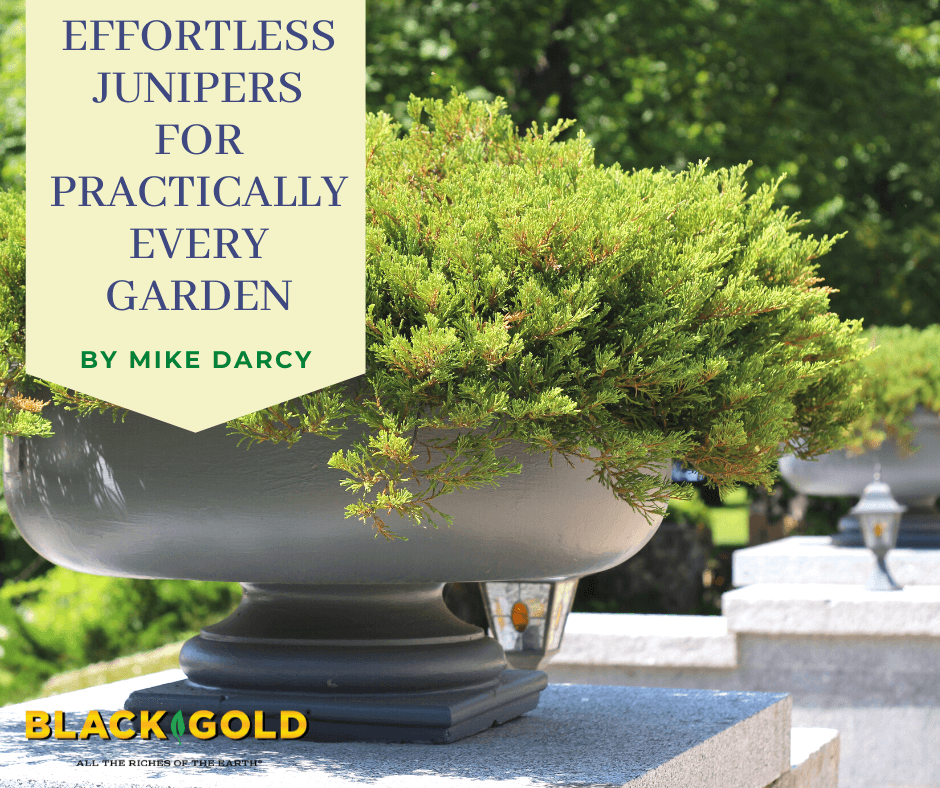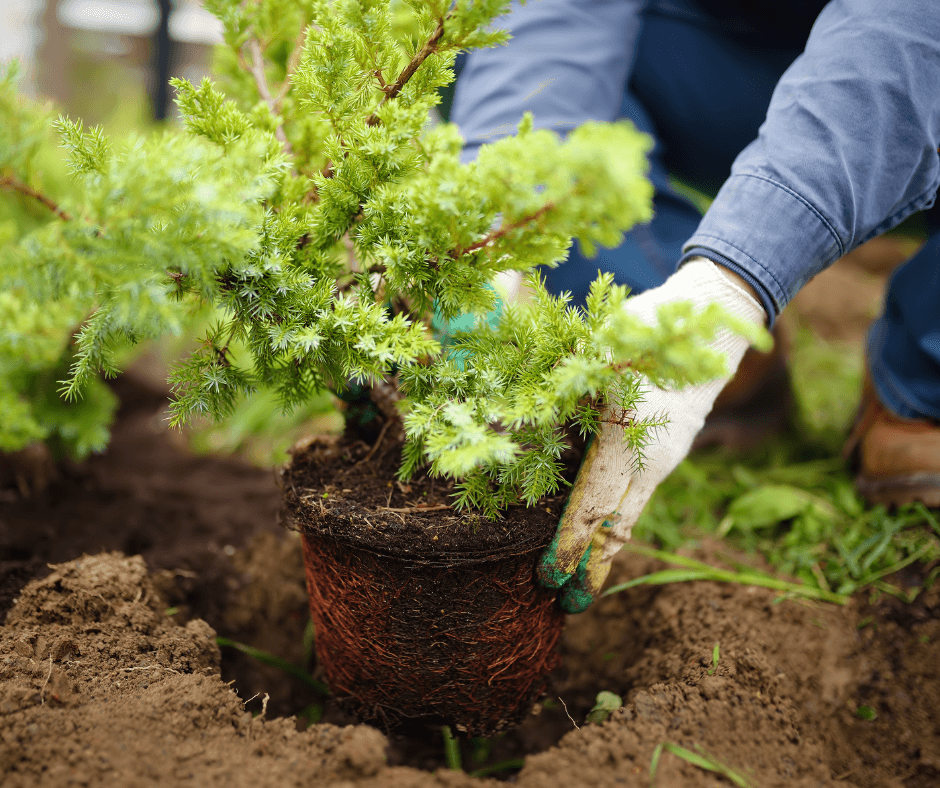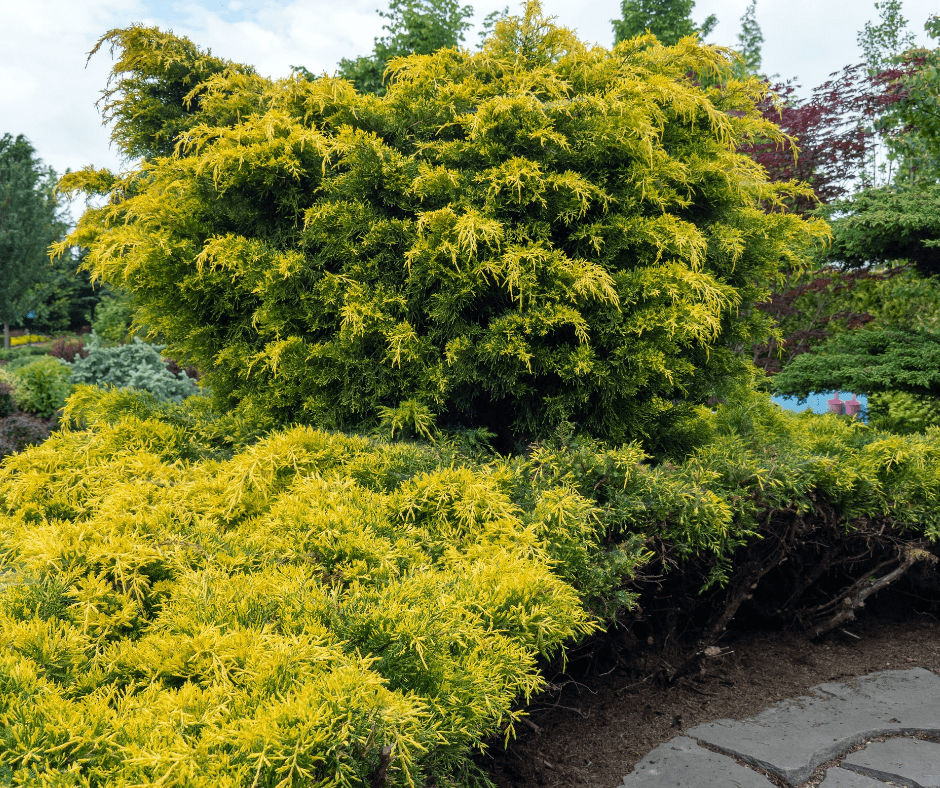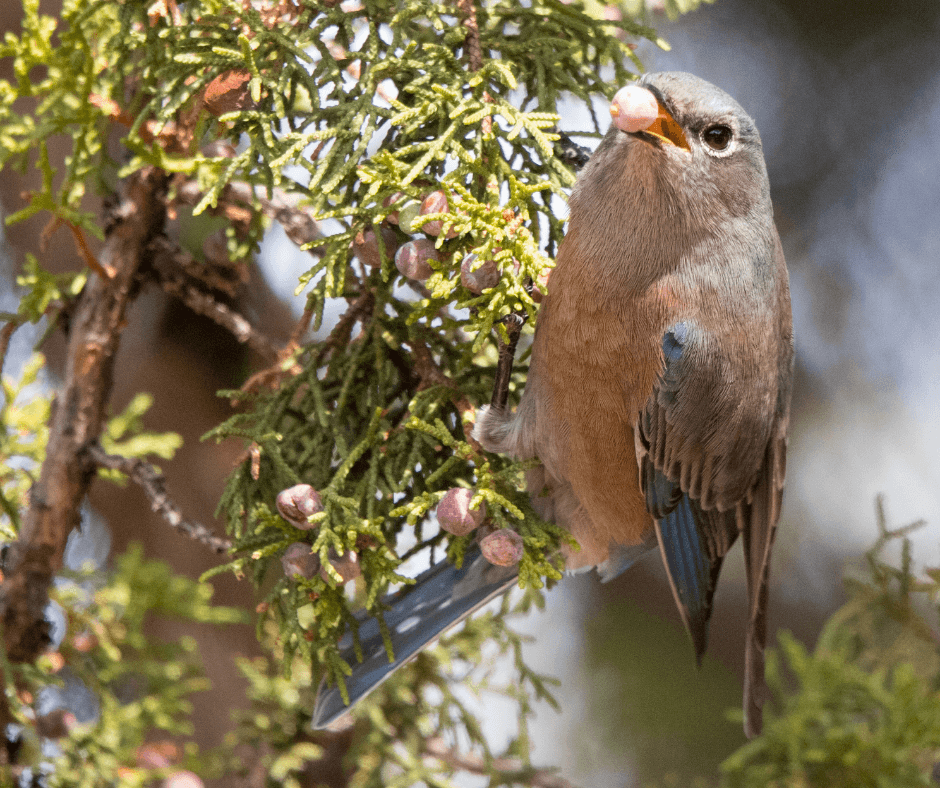
There are few plants that come in as many different forms as the juniper. The Genus Juniperus includes plants that are grown as ground covers with some that hug the ground at just several inches and others that may reach 2-3 feet in height. Another category is the shrub types, and these can range in growth from 4-12 feet. Junipers can also be columnar in their growth habit with heights ranging from about a few feet up to 20-30 feet. Then, there are the tree junipers that can reach 50 feet or more.

Junipers are conifers, but instead of cones, the female shrubs have berry-like, waxy, blue-green fruits. The berries of some types are highly scented and are often used during the Christmas and New Year holiday season in wreaths and often as part of an evergreen indoor table decoration. Often, juniper scent is incorporated into holiday candles. Most juniper plants produce berries that are attractive to many birds. Hummingbirds often build nests in the larger shrub and tree types.
Juniper foliage color can be various shades of green to blue, gray, and yellow. The leaves of some have smooth or prickly needles, so consider this when choosing a variety. Prickly forms should be planted in areas where people won’t have contact with the foliage.
Growing Juniper

Good drainage is a requirement for most juniper varieties, and once established many require little or no additional water, depending on your plant zone. Be sure and read the plant label for detailed planting guidelines. Most varieties will take a full sun location, but there are some that like some protection from the hot afternoon sun. Well-drained average soil will usually suffice. Amending the soil at planting time with a little Black Gold Canadian Sphagnum Peat Moss will encourage good growth from the start.
There is a vast selection of juniper choices, so it would be impossible to list all of the many varieties here. Instead, I have included several popular varieties that should be readily available at garden centers.
Groundcover Junipers

Tam juniper (Juniperus sabina ‘Tamariscifolia’, Zones 4-7), is often referred to as simply Tam. With blue-green foliage, expect this juniper to reach 2-3 feet in height and a width of 10 ft. It is one of the most widely used junipers in gardens.
Blue rug juniper (J. horizontalis ‘Wiltoni’, Zones 3-9) has silver-blue foliage that hugs the ground with long trailing branches. It is flatter and grows closer to the ground than the Tam Juniper. Expect it to spread beautifully. Specimens will tolerate some salt-spray and sandy soil, so it is a great oceanside shrub.
Shrub Junipers

Weeping needle juniper (J. rigida ‘’Pendula’, Zones 5-8) has an upright main stem and is often trained and staked to show off the secondary branches with weeping tips. Its green foliage and blue-black fruits are appealing. It will reach 15-20 ft in height when mature.
Pencil point common juniper (J. communis ‘Compressa’, Zones 3-7) is a very tight shrub with blue-green foliage. It is a slow grower that only grows about 2-4 inches per year. This is an ideal conifer for a rock garden and rarely needs pruning. Sometimes it is planted in rows as a dividing line in the garden.
Gold Coin common juniper (J. communis ‘Gold Coin’, Zones 3-7) is a conical, upright form with finely cut foliage. It is most admired for its brilliant new golden growth which turns bright green in the summer. It will reach about 10 feet.
Moonglow Rocky Mountain juniper (J. scopulorum ‘Moonglow’, Zones 3-7) is a dense conical grower with steel-blue color. At maturity, it will reach 8-10 feet. It makes a good screen and can be sheared as needed.
Tree Junipers

Western juniper (J. occidentalis, Zones 4-8) has fragrant green foliage and is native to intermountain regions from Central Washington to Southern California. It is very large growing and will reach 50-60 ft. The fruits are essential food for many native birds.
Weeping blue juniper (J. scopulorum ‘Tolleson’s Blue Weeping’, Zones 3-7) will usually reach about 20 feet and has very distinctive weeping branches that are silvery blue. It makes a graceful weeping tree.
I suggest visiting a local arboretum or garden center with a conifer display garden. Most conifer display gardens will include junipers. It is always wise to check out plants that will be permanent in your garden before making a final selection. Seeing plants growing out in the open may give a very different ‘look’ as compared to seeing them in a nursery container.


